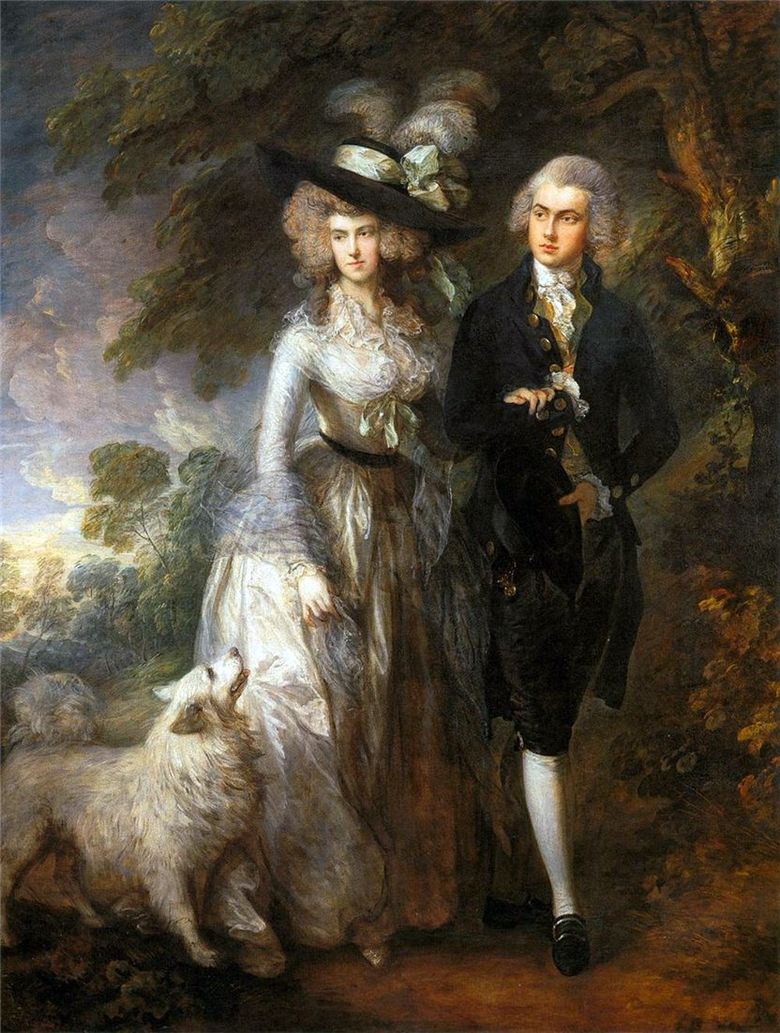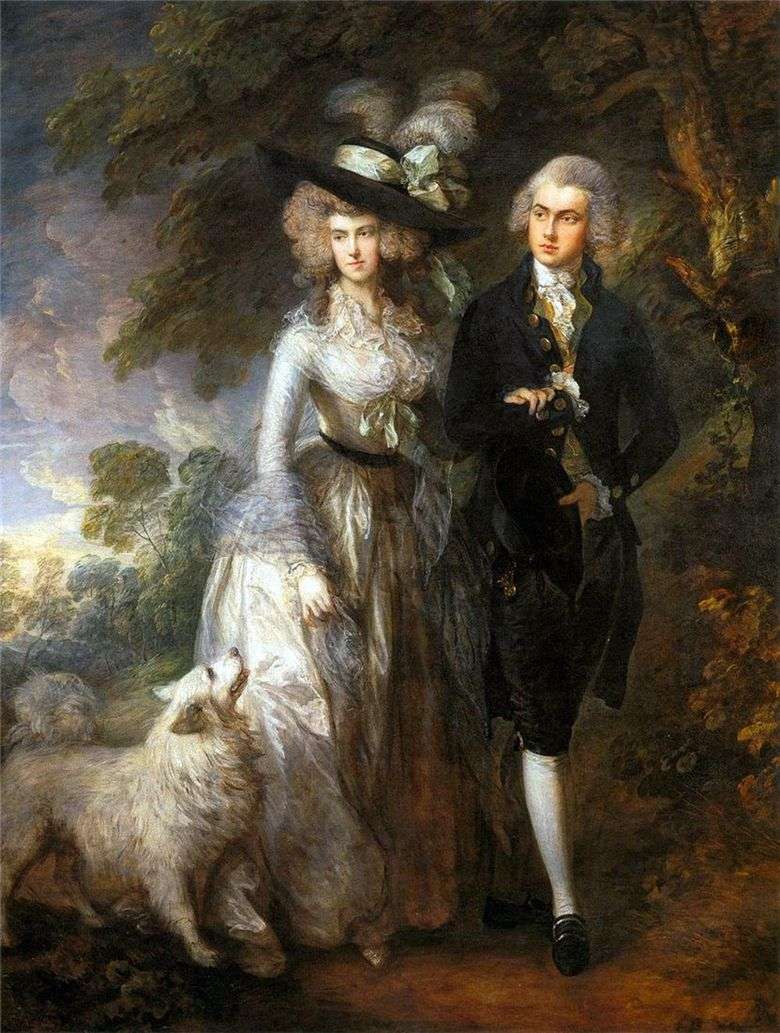
The gulf separates this late portrait from “Portrait of Mr. Andrews and his wife.” The vital energy inherent in the latter has, over time, transformed into subtle elegance. The exact landscape details were replaced by a blurred “landscape background”. Not every viewer, having seen “The Portrait of Mr. Andrews and his wife,” will say that he belongs to the brush of Gainsborough. But “Morning Walk” can not be attributed to any other master. It is a Gainsbourgian to the smallest stroke.
This double portrait of William Hallet and Elizabeth Stephen was commissioned by the artist for their wedding, held in the summer of 1785. Spouses Hallette did not belong to the cream of English high society, but Gainsborough portrayed them aristocrats to the bone. In this picture, first of all, amazingly harmonious fusion of people and nature. The reception that would allow such a fusion to be natural, Gainsborough found only at the very end of the work on this portrait – and wrote a young couple strolling along the shady park. I must say that the artist’s creative heritage has a sufficient number of portraits on the background of the landscape, but it is in the “Morning Walk” that the characters and the landscape background are combined most naturally.
Many art critics believe that the reception of the “portrait in the landscape” Gainsborough took from Antoine Watteau, who loved to write his characters in the bosom of nature. The reader, of course, understands that the artist did not force his clients to pose in the park for him. No, all the work was happening in the workshop. Scenery was selected after the “main characters” were written.
 Portrait of Mr. Andrews and his wife by Thomas Gainsborough
Portrait of Mr. Andrews and his wife by Thomas Gainsborough Mr. and Mrs. Andrews by Thomas Gainsborough
Mr. and Mrs. Andrews by Thomas Gainsborough Promenade du matin – Thomas Gainsborough
Promenade du matin – Thomas Gainsborough William Pointe of Midgehem and his dog Amber by Thomas Gainsborough
William Pointe of Midgehem and his dog Amber by Thomas Gainsborough Portrait of Eneaj Lloyd with Sister Lucy by Thomas Gainsborough
Portrait of Eneaj Lloyd with Sister Lucy by Thomas Gainsborough Paseo por la mañana – Thomas Gainsborough
Paseo por la mañana – Thomas Gainsborough Landscape in Suffolk by Thomas Gainsborough
Landscape in Suffolk by Thomas Gainsborough John Plumpin by Thomas Gainsborough
John Plumpin by Thomas Gainsborough